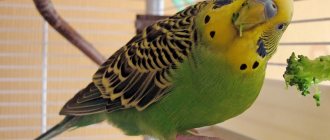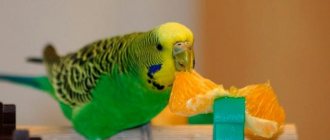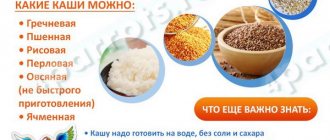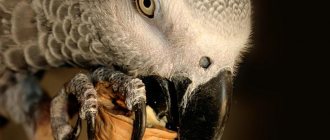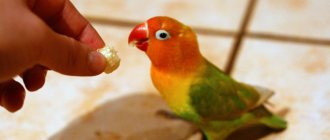The nutrition of parrots is the basis of their health and longevity, which means this issue must be approached responsibly. Therefore, from a very early age, the bird needs to choose the right diet. Remember that ordinary food from the human table can be not only harmful to birds, but also deadly.
This article will discuss the basics of proper feeding of a parrot, which will ensure its longevity and health. This is a grain mixture, greens and sprouts, cereals, vegetable and fruit components, branch food and drink. By combining these products and offering the pet a varied menu, owners can satisfy the needs of the birds as much as possible.
Hard food
The daily diet of parrots should include a grain composition. This is the basis without which it is difficult to imagine proper nutrition. When to pour food into the feeder (the daily norm once a day or add food several times a day) does not really matter, the main thing is that the parrot always has enough food, since they can do without food for no more than 24 hours.
Pet stores offer a wide selection of grain mixtures, ranging from the diet of budgerigars to large birds. Feed compositions vary depending on the size of the pet and its natural habitat. The following brands have proven themselves well: Italian Padovan, Belgian Versele-Laga, Italian Fiory, Russian RIO. When purchasing, be sure to make sure that the grain feed is tightly packaged and that its expiration date has not expired. Before pouring it into the bird's feeder, carefully inspect the grain to ensure there are no foreign impurities in it.
The nutrition of budgerigars or other species of these birds can be diversified by germinating the grain mixture. Sprouts are a storehouse of vitamins for parrots, which will have a beneficial effect on the functioning of your pet’s entire body. Please note that if you do not wait for the greenery to fully germinate (to the point of grass), but give a slightly hatching sprout, then such feeding provokes sexual behavior in birds. In addition to very young shoots, the bird also needs ordinary greens (nettle, lettuce, fireweed, dandelion). Greens from oats, wheat, and lettuce can also be grown on your windowsill.
When feeding Grays or other large birds, keep in mind that mixtures for large parrots already include nuts and seeds, so you should not offer them separately; use them separately only as a reward or treat.
What not to give
Despite the omnivorous nature of parrots, there is a list of foods that are not recommended for them to consume. This list is not categorical, but it is better to follow the recommendations and not overload your pet’s body.
Raw potatoes
Despite the fact that boiled potatoes can sometimes be given to feathered pets, it is better not to give raw potatoes to your parrot. Tubers contain many useful substances, but they contain a lot of starch, which negatively affects intestinal function.
Radish
Birds love the juicy pulp of radishes, but after eating they may experience problems in the form of upset.
This vegetable is distinguished by high levels of spice, which irritate the gastrointestinal mucosa, disrupt its functioning and can cause serious illness. Products with a pungent taste are prohibited for use on birds.
Eggplant
The negative impact of eggplant is expressed in its high solanine content. This toxic substance causes intoxication and can significantly ruin the well-being of your feathered friend.
Green and onions
The high content of essential oils and phytoncides makes onions unsuitable for use as parrot food. Once in the body, it can cause vomiting and upset. With frequent use it causes anemia.
Garlic
Despite the high content of useful substances, including anthelmintic, antimicrobial and tonic properties, garlic is dangerous for birds.
Do not eat green parts of the plant or pieces of bulbs. In case of frequent use, death is possible.
Parsley
It is categorically not recommended to feed the bird parsley root, but regarding its greens, zoologists have differing opinions. However, in order not to harm your pet, it is better to choose another type of herbs that does not contain such a large amount of essential oils.
Dill
This spice, which budgies love so much, can have a negative effect on the bird's internal organs. But this only happens if it is abused.
You can give dill to your parrot once every 2 weeks to diversify its diet.
Cilantro
Unlike other spicy plants, cilantro greens are strictly prohibited from being introduced into the diet of pets. Its components are very irritating to the gastrointestinal tract and cause discomfort.
Fruits, vegetables and berries
If you have a cockatiel parrot at home, its care, maintenance, and feeding, like other types of birds, must be carried out according to certain rules and taught to them from a very early age. Fruit and vegetable additives must be on the poultry menu. If a bird refuses to eat a healthy product, then the owner’s task is to convince it otherwise. for example, offering the parrot beautifully chopped carrots. Be creative and present food to the bird in different forms and designs! Be patient and don't give up.
Despite all the usefulness of fruits, the right question for the owner would be: Which fruits can parrots eat and which ones can’t? It will be useful to include in your pet’s diet: apricot, cherry, pineapple, plum, apple, pear, peach.
Feeding your cockatiel, Gray or other bird species can be supplemented with berries and citrus fruits such as: oranges, watermelons, gooseberries, pineapple, lingonberries, viburnum, strawberries, blueberries, cranberries, kiwi, red and black currants, tangerines, kiwi. Just in case, it is better to remove the peel from citrus fruits, and remove the pits from fruit crops such as cherries, apricots and plums. Berries collected in the summer can be frozen and offered to the parrot defrosted in the winter.
Healthy vegetables for parrots are carrots, pumpkin, zucchini, tomato, cucumber, pepper, zucchini, and rutabaga. Cauliflower and Brussels sprouts, broccoli, beets, turnips and green peas can also be given to birds, but they must first be blanched (scalded and left in boiling water for a few minutes). Some bird owners know what vegetables their parrot can eat, but they boil them before putting them in the cage. It is better to offer them fresh, since when cooked, vegetables will lose all their beneficial vitamins and microelements.
When feeding a cockatiel parrot or other species of these birds, you should not include: potatoes, avocados, fresh mangoes, persimmons, fresh papaya, candied fruits sold in stores. Please note that mango and papaya are found dry in mixtures, in which case they are harmless.
Other
You can supplement the menu of your favorite pets with wheat, millet, and oats. If the question arises about whether it is possible to give a parrot a watermelon, then it is preferable to give one grown in a local melon at the end of summer. Parrots also love Chinese cabbage. It is not recommended to give celery.
The digestive system of parrots easily copes with the digestion of grains, young bark, herbs, and vegetables. By introducing foods that are allowed for them into the diet, the owner ensures good health and excellent mood.
Branch food
In order for you to have healthy, active and beautiful budgies, care and feeding must be correct. This means that their diet must contain twig food in addition to grain mixtures, fresh fruits and vegetables. Many bird owners do not suspect that twigs are needed for complete nutrition, and not just for beak care. Through twig food, the parrot receives healthy fiber and microelements.
What trees can you give a parrot? Among those common in Russia are the branches of birch, alder, hazel, cherry, willow, elderberry, aspen, linden, maple, apple, and rowan. They must first be disinfected - scalded with boiling water. Remember that you only need to collect branches away from roads and highways!
Branch food can be offered not only in summer, but also in winter. To do this, cut branches need to be placed in water until the buds swell. Next, you should rinse and scald them with boiling water.
The importance of twigs cannot be underestimated, because in addition to their nutritional value, a parrot can use them as exciting fun, an activity for its beak and paws.
What types of cabbage are allowed?
In Russia, white cabbage is the most popular. You can buy it in almost every grocery store. At the same time, it contains an impressive range of elements useful for birds, and is also unpretentious in storage.
Types of cabbage allowed for parrots:
- Beijing (salad);
- broccoli (asparagus);
- colored;
- kohlrabi.
To feed parrots, it is better to use classic subspecies of crops, avoiding hybrids.
The latter may contain elements dangerous for birds and especially for young animals.
Porridge
Porridge for parrots is also very healthy. This is not only a source of many microelements, but also a means that will help birds normalize their metabolism if it is disturbed. Cook porridge only in water, without adding sugar or salt.
You can cook complex mixtures consisting of several cereals, as well as mono-porridge for budgies from buckwheat, oatmeal, and brown rice. You can add legumes, as well as grated fruits or vegetables to the porridge. The finished cereal can be cooked viscous or crumbly. In this case, listen to the food tastes of your pet.
You can store the cooked porridge in the refrigerator for no more than 2 days.
Can you give budgies, lovebirds, and cockatiels carrots?
Fans of colorful parrots often think about the diet of their pets, because they so want to see a healthy, beautiful and active bird at home.
This is why it is so important to know whether parrots can be given carrots. Let's figure it out together. Carrots are a vegetable familiar to all of us, and of course, it contains many useful substances. This includes carotene, sugar, various vitamins and minerals, and it is clear that this is a real storehouse for health and strength, and not only for birds.
So the answer to the question of whether it is possible to give carrots to parrots is certainly one - not only possible, but also necessary.
Water and juices
All birds must receive water. The amount depends on how much vegetables, fruits and food the birds eat, as well as on the temperature in the room. You may think that water for parrots does not require replacement every day, because your pet drinks very little. But that's not true. There should be fresh, clean water in your pet's cage every day. Moreover, in summer it is worth pouring fresh liquid into the drinking bowl 2 times a day.
Figuring out what kind of water to give parrots is not difficult. Just do not give your birds tap water, boiled water or carbonated water. It is best to give bottled water without gas, which contains potassium (at least 20), magnesium, and sodium. You can offer your parrot filtered liquid from the tap, but in this case you must constantly monitor the condition of the filter. You can add a little lemon juice, a decoction of chamomile or rose hips to the water.
Juices are also very useful for a parrot. They need to be made in a juicer from vegetables or fruits (from the approved list) or bought ready-made in jars intended for baby food. If you offer your parrot store-bought baby juices, make sure they are sugar-free. Juices can be diluted with water. Make sure that the juice does not sit in the drinker for too long; juices quickly deteriorate in the heat.
Did you like the article? Share it with your friends!
How to choose and buy a grain mixture for a parrot?
- The online pet store “Kakadushka” has implemented a convenient system of automatic assistance in selecting products using filters. To select a grain mixture, you need to go to the appropriate section of the Feed website.
- First of all, you need to choose the type of your parrot - large (for example, Gray, cockatoo or Amazon), medium (for example, cockatiel) or wavy.
- Now on the website you will see only those foods that are suitable for the selected species of birds. Then you can use additional filters - specify the manufacturer or type of diet you are interested in.
- After these steps, the site will display suitable grain mixtures. Now all you have to do is choose and buy.
